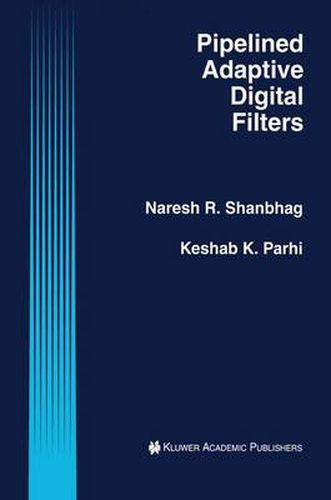Readings Newsletter
Become a Readings Member to make your shopping experience even easier.
Sign in or sign up for free!
You’re not far away from qualifying for FREE standard shipping within Australia
You’ve qualified for FREE standard shipping within Australia
The cart is loading…






This title is printed to order. This book may have been self-published. If so, we cannot guarantee the quality of the content. In the main most books will have gone through the editing process however some may not. We therefore suggest that you be aware of this before ordering this book. If in doubt check either the author or publisher’s details as we are unable to accept any returns unless they are faulty. Please contact us if you have any questions.
Adaptive filtering is commonly used in many communication applications including speech and video predictive coding, mobile radio, ISDN subscriber loops, and multimedia systems. Existing adaptive filtering topologies are non-concurrent and cannot be pipelined. Pipelined Adaptive Digital Filters presents new pipelined topologies which are useful in reducing area and power and in increasing speed. If the adaptive filter portion of a system suffers from a power-speed-area bottleneck, a solution is provided.
Pipelined Adaptive Digital Filters is required reading for all users of adaptive digital filtering algorithms. Algorithm, application and integrated circuit chip designers can learn how their algorithms can be tailored and implemented with lower area and power consumption and with higher speed. The relaxed look-ahead techniques are used to design families of new topologies for many adaptive filtering applications including least mean square and lattice adaptive filters, adaptive differential pulse code modulation coders, adaptive differential vector quantizers, adaptive decision feedback equalizers and adaptive Kalman filters. Those who use adaptive filtering in communications, signal and image processing algorithms can learn the basis of relaxed look-ahead pipelining and can use their own relaxations to design pipelined topologies suitable for their applications.
Pipelined Adaptive Digital Filters is especially useful to designers of communications, speech, and video applications who deal with adaptive filtering, those involved with design of modems, wireless systems, subscriber loops, beam formers, and system identification applications. This book can also be used as a text for advanced courses on the topic.
$9.00 standard shipping within Australia
FREE standard shipping within Australia for orders over $100.00
Express & International shipping calculated at checkout
This title is printed to order. This book may have been self-published. If so, we cannot guarantee the quality of the content. In the main most books will have gone through the editing process however some may not. We therefore suggest that you be aware of this before ordering this book. If in doubt check either the author or publisher’s details as we are unable to accept any returns unless they are faulty. Please contact us if you have any questions.
Adaptive filtering is commonly used in many communication applications including speech and video predictive coding, mobile radio, ISDN subscriber loops, and multimedia systems. Existing adaptive filtering topologies are non-concurrent and cannot be pipelined. Pipelined Adaptive Digital Filters presents new pipelined topologies which are useful in reducing area and power and in increasing speed. If the adaptive filter portion of a system suffers from a power-speed-area bottleneck, a solution is provided.
Pipelined Adaptive Digital Filters is required reading for all users of adaptive digital filtering algorithms. Algorithm, application and integrated circuit chip designers can learn how their algorithms can be tailored and implemented with lower area and power consumption and with higher speed. The relaxed look-ahead techniques are used to design families of new topologies for many adaptive filtering applications including least mean square and lattice adaptive filters, adaptive differential pulse code modulation coders, adaptive differential vector quantizers, adaptive decision feedback equalizers and adaptive Kalman filters. Those who use adaptive filtering in communications, signal and image processing algorithms can learn the basis of relaxed look-ahead pipelining and can use their own relaxations to design pipelined topologies suitable for their applications.
Pipelined Adaptive Digital Filters is especially useful to designers of communications, speech, and video applications who deal with adaptive filtering, those involved with design of modems, wireless systems, subscriber loops, beam formers, and system identification applications. This book can also be used as a text for advanced courses on the topic.